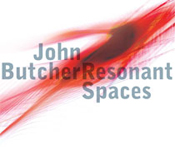|
|
 |
Dusted Reviews
Artist: John Butcher Album: Resonant Spaces Label: Confront Review date: Jan. 27, 2009 |

|
|
|
 |
Everything about this release is beautiful and intriguing – the music, the packaging, the photographs, the notes and the story they tell. The music here dates from the days between 20th and 29th June 2006, during which John Butcher went on a musical odyssey across Scotland and Orkney, playing occasional concerts for whoever turned up. (The odyssey also included Japanese sound artist Akio Suzuki, although he is not heard on this release. Readers of The Wire magazine may remember an August 2006 feature about the trip.) Butcher played in a variety of resonant spaces – a cave, a fuel storage tank, an underground reservoir, a standing stone circle, an ice house and a mausoleum – each imbued with its own history and character. The 15 pages of notes and photographs (there is even a map included of the locations) convey the trip’s atmosphere of adventure and discovery.
The odyssey was not surprising, as Butcher has always sought out musical territory that others avoid. In recent years, that’s included working with controlled feedback and in very resonant spaces. His playing in the cavernous underground Oya Stone Museum in Japan and the vast gasometer in Oberhausen, Germany, are well documented on Cavern with Nightlife (Weight of Wax, 2004) and Geometry of Sentiment (Emanem, 2007). Resonant Spaces develops that work further. Doubtless, many of us have childhood memories of discovering a resonant space and of playing with its echoes, by making vocal noises of different volumes, pitches and durations, to discover their properties and possibilities. In effect, Butcher is doing the same thing when he plays in such spaces, with the added advantage that he is a master saxophonist able to play whatever he wants and to respond instantly to the sounds he hears back. Consequently, each piece here is effectively a duo between Butcher and the reflected sound. As Butcher says, “I don’t want to just demonstrate each space’s sound. It should be an encounter between a musician and a place that gives a fighting chance to drawing something new from both of them.” To achieve something new, Butcher plays tenor and soprano saxophones and utilizes a variety of techniques, including the use of feedback saxophone which he has pioneered, giving each of the pieces its own unique sound. Some are far removed from the normal realms of improvised sax and more closely resemble electronics.
The opening and closing pieces, entitled “Sympathetic Magic (stone)” and “Sympathetic Magic (metal)” act as exemplars of what Butcher can achieve. The first, recorded in the mausoleum, employs feedback tenor that generates pure high frequency tones with an ethereal quality. The latter, in an oil tank, employs feedback soprano that, surprisingly, gives richer, fuller tones than the tenor version. On neither track is it obvious that a saxophone is the instrument responsible for what we hear. “Sympathetic magic” is a well-chosen description of the sounds produced, as the music works best when the two components are most sympathetic; in part, that’s luck, but more so a measure of Butcher’s skill as he tailors his playing to sympathize with the echoes he receives back. It is telling to compare those two pieces with “Wind Piece,” recorded in a standing stone circle which, by its nature, is less resonant and less suitable as a duet partner. Butcher strove to elicit usable reflections from the stones, but when faced with a strong wind, he succumbed and let Mother Nature play soprano, producing a delicate sound sculpture seemingly against the odds. It typifies his exploratory approach to saxophone.
By John Eyles
|







